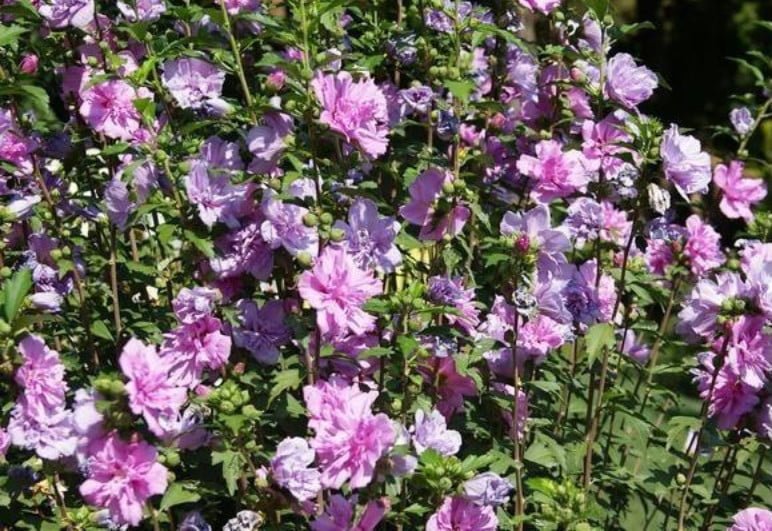
- Curbs, or low hedges;
- Nuances of hedges from Potentilla fruticosa;
- Nuances of hedges from Calluna vulgaris;
- Nuances of hedges from Spiraea;
- The nuances of the borders of Mahonia aquifolium;
- Nuances of rose borders;
- The nuances of the borders of Rhododendron;
- The nuances of the borders of Berberis;
- The nuances of the borders of Lavandula ;
- The nuances of the borders of Viburnum tinus;
Once again, I return to one of my favorite themes — hedges. Today we will talk about flowering plants for framing cottages.
Such landings are very popular in the landscape design of sites around the world. Interest in them is huge, as they are universal: depending on the selected wood species can match different styles.
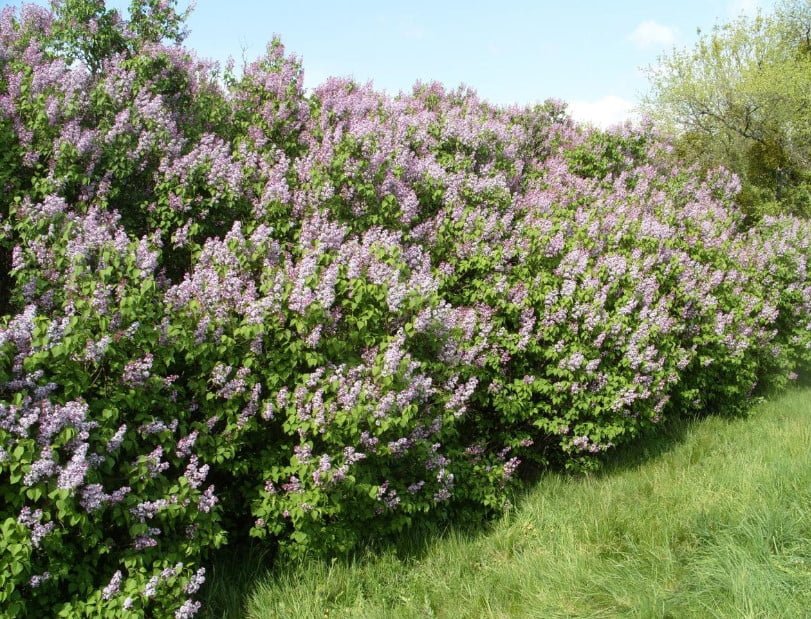
The natural beauty of the flowering of the lines is more consistent with the public mind, than the strictness of cut green lines.
A hedge of Camellia Japanese luxury framing of a Japanese garden.
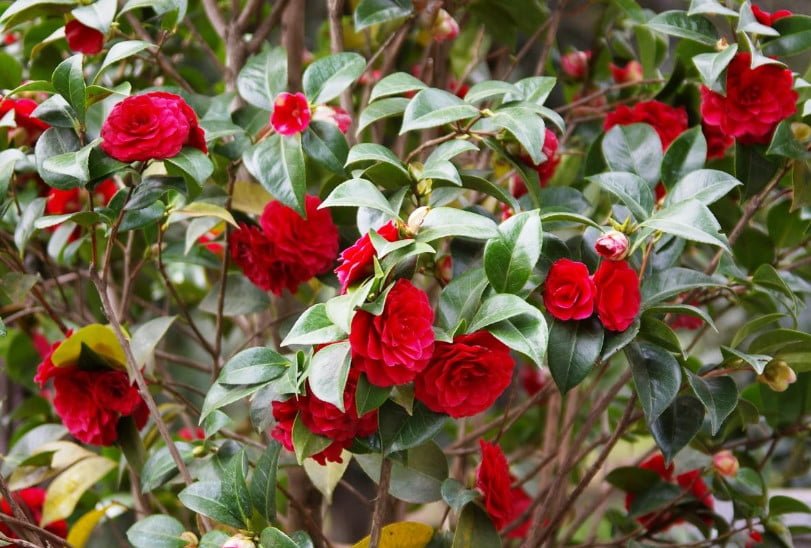
Asian style villas, manors emphasize the blooming line Kolkwitzia amabilis, Kerria japonica, which are originally from China, Japan, Korea.
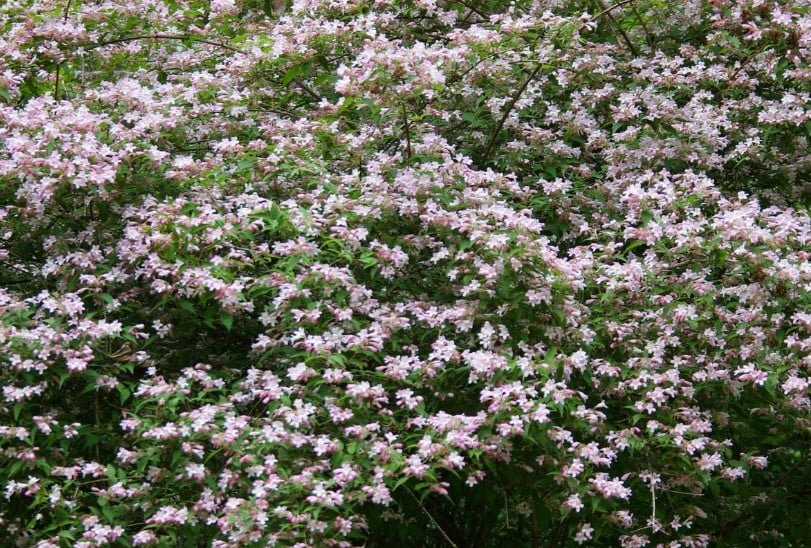
And unpretentious hedge of Kerria japonica-one of the longest-flowering shrub will tirelessly blossom double flowers from April to late autumn, but with fertilizing and watering.

Southern chic fences, appropriate Mediterranean style:
- Hidiscus syriacus;
- Nerium oleander;
- Abelia x grandiflora;
- Laburnum anagyroides;
- Tamarix.
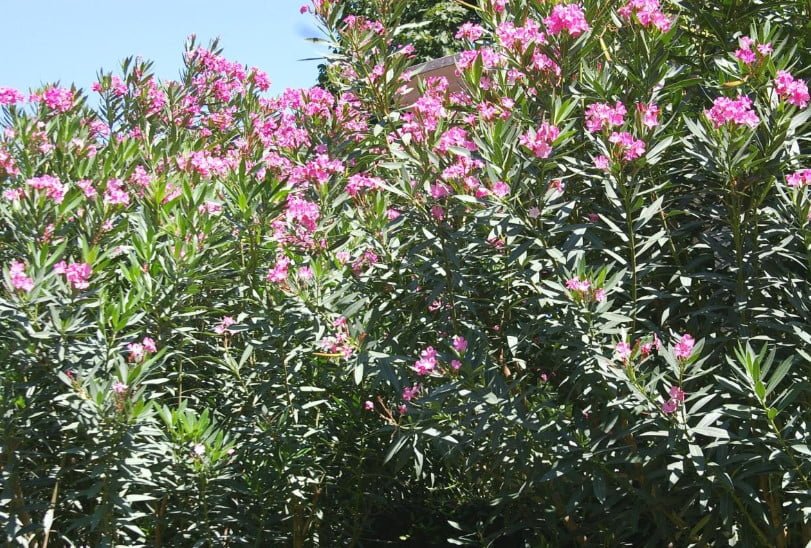
Despite the maximum decorative effect during flowering, the hedges are interesting, and outside of this peak. Most of the breeds used for their arrangement are distinguished by strong beautiful branching, dense foliage from bottom to top, autumn decorative effect. Plus they are unpretentious in care, easy to tolerate pruning. Beautiful flowering hedges all year round perform one of their main functions — frame the suburban area.
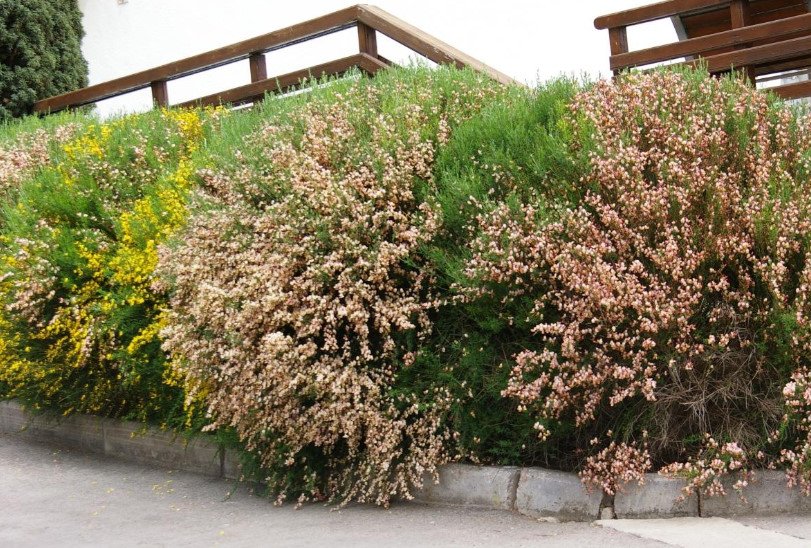
Now the range of flowering shrubs to create hedges is rich and diverse. Therefore, when choosing a type, variety for the arrangement of a live fence or a spectacular differentiation of the suburban area into functional zones, the main thing is to decide: what do you want?
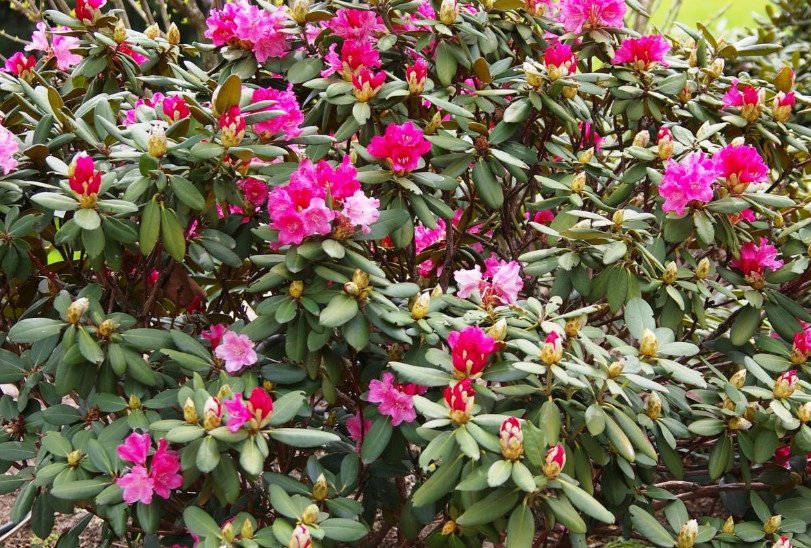
Beautiful flowering hedges can be arranged from species and varieties:
- Sambucus;
- Hydrangea;
- Cornus;
- Lonicera;
- Clematis;
- roses;
- Dasiphora fruticosa;
- Rhododendron;
- Syringa;
- Spiraea;
- Deutzia;
- Weigela;
- Chaenomeles;
- Philadelphia;
- Laburnum;
- Viburnum.
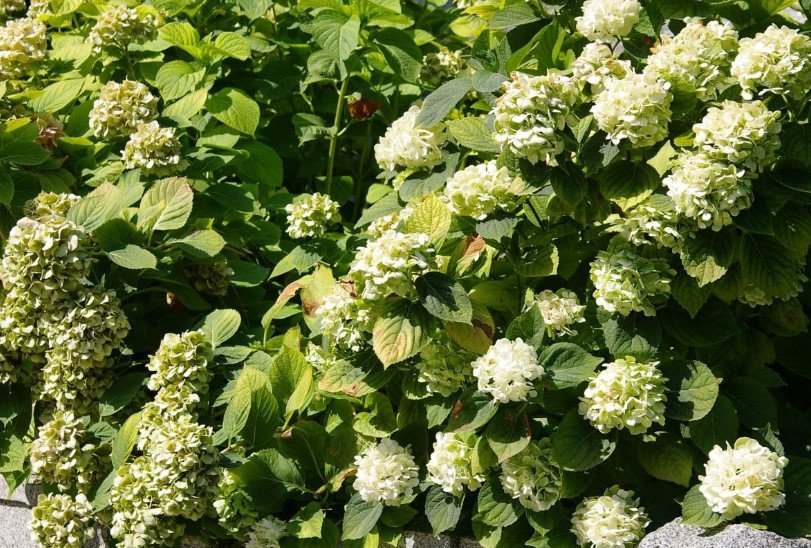
Let me remind you that the height of hedges distinguish:
- up to 1.0 m-curbs, or low hedges;
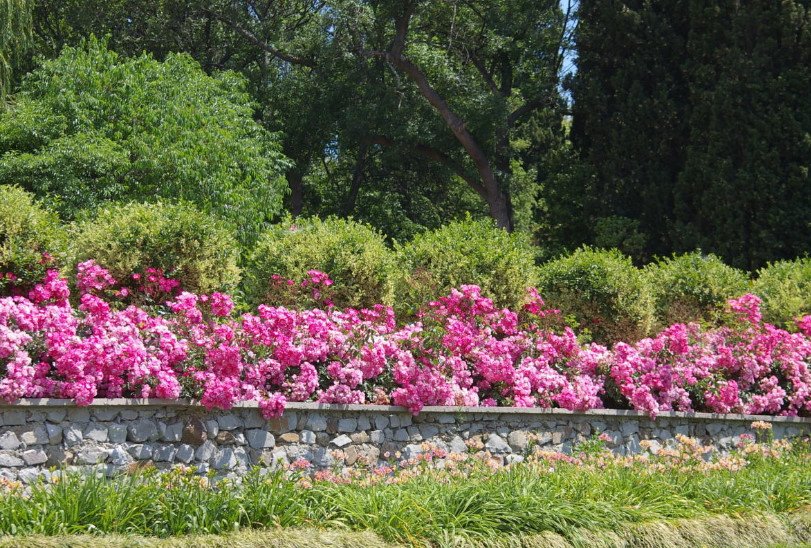
- 1.0-2.0 (3.0) m – medium hedges;
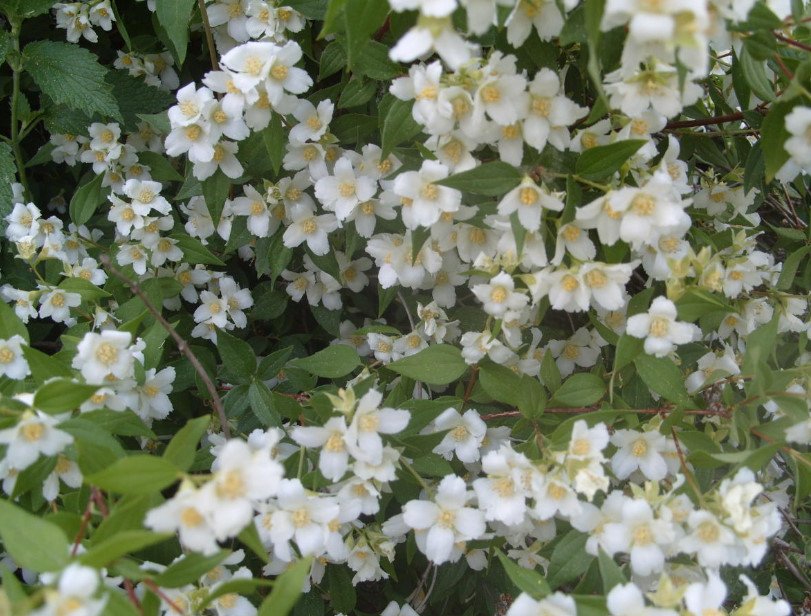
- more than 3.0 m — living walls.

Within this gradation, we will consider the beautiful hedges.
Curbs, or low hedges
They are good at:
- Potentilla fruticosa;
- Calluna vulgaris;
- Spiraea salicifolia, S. japonica;
- Chaenomeles japonica, and other.
Nuances of hedges from Potentilla fruticosa
Despite the fact that it is well withstands haircut, flower potential in full reveal only in beautiful borders and low hedges without molding; especially effective Potentilla fruticosa on the background of coniferous trees with dark green needles.

Suitable for first row high, bares bottom and fences.
Nuances of hedges from Calluna vulgaris
In the middle lane Calluna vulgaris winter without shelter, but the fence of the variety of plants in the first 3 years of planting it is necessary to insulate the base of the shrubs to mulch with compost, dry leaves. Hedges ‘Hammondii Aureifolia’ constantly demands the “winter coats.”
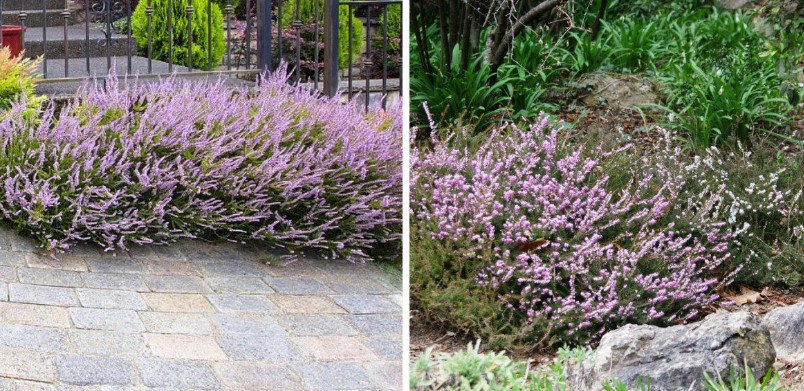
Calluna hedges are light-loving, tolerant to openwork shade; can grow both on dry sandy and wet peat soils, but certainly acidic. Quite stable, but in warm humid conditions can be damaged by root rot.
Nuances of hedges from Spiraea
Spiraea well tolerate haircut, after which quickly restored, but in the molded hedges lost all the beauty of their snow-white flowering. Spiraea hedges effective at the free-growing plantings. Pruning of shrubs is carried out with the removal of half the length of the faded shoots. If necessary, slightly trim the fence on the sides, shortening the long branches that break out of the desired contour.
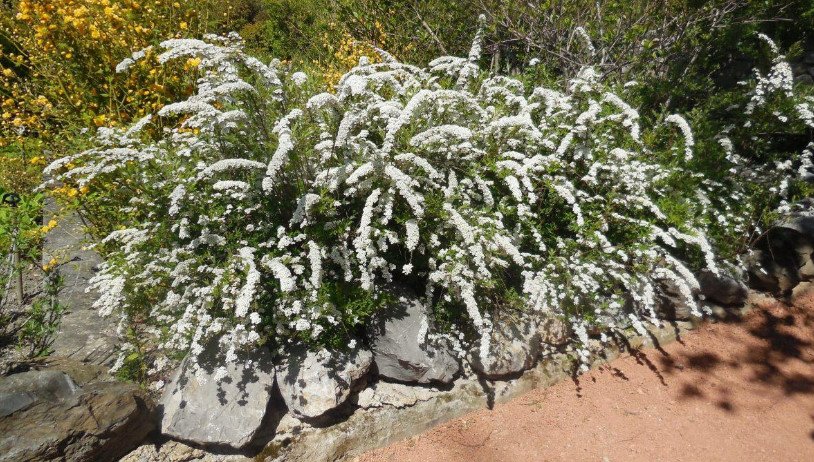
When planting should adhere to the distance between plants: in the ranks-40-50 cm, between the rows-30-40 cm.
The nuances of the borders of Mahonia aquifolium
Due to the excellent for evergreen species winter hardiness (withstands temperatures down to -29°C), Mahonia aquifolium forms excellent flowering borders in the southern zone of gardening.
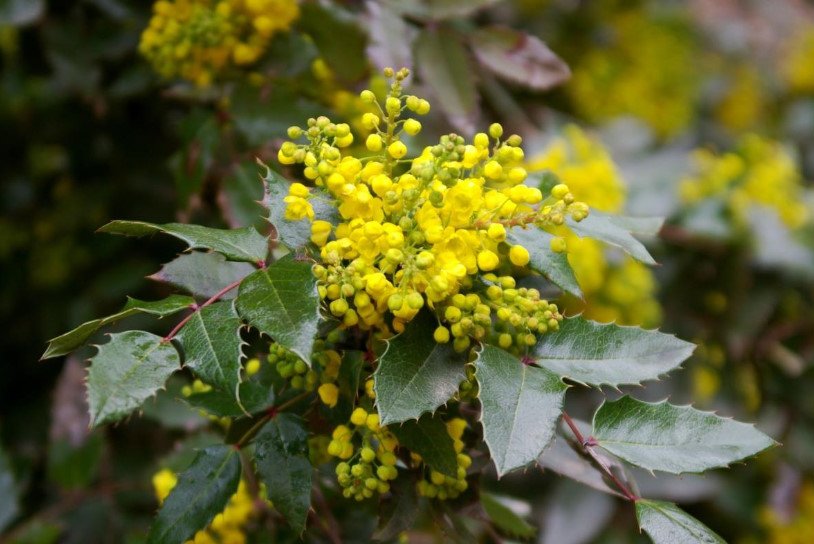
This requires control over the spread of the root shoots or limiting the roots of slate, metal sheets and other material (which can be done when laying fences). Pruning of borders is reduced to easy trimming of branches, which are knocked out of the desired contour (carried out after flowering).
Spring can not do without sanitary pruning frozen and dead shoots. In recent years, Mahonia often suffers from may return frosts, accompanied by a strong cold wind, and spring burns. In such situations, you just need to throw on the bushes gauze or burlap.
Nuances of rose borders
They are satisfied with freely growing varieties of ground cover, undersized polyanthus and miniature roses.
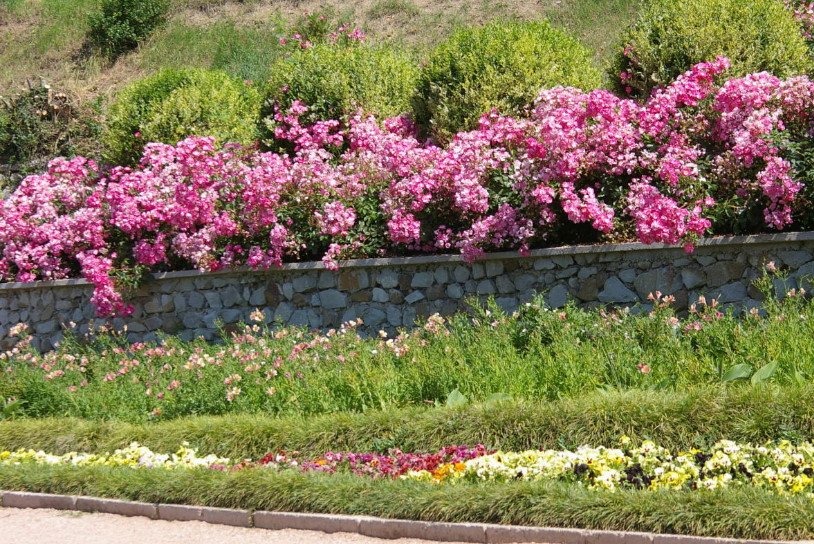
Pruning of such borders is carried out according to the requirements of garden groups of roses.
The nuances of the borders of Rhododendron
On the South the cottages to create a flowering evergreen low hedges suitable:
- R. russatum;
- R. ledebourii;
- R. impeditum;
- R. ponticum;
- R. ferrugineum.
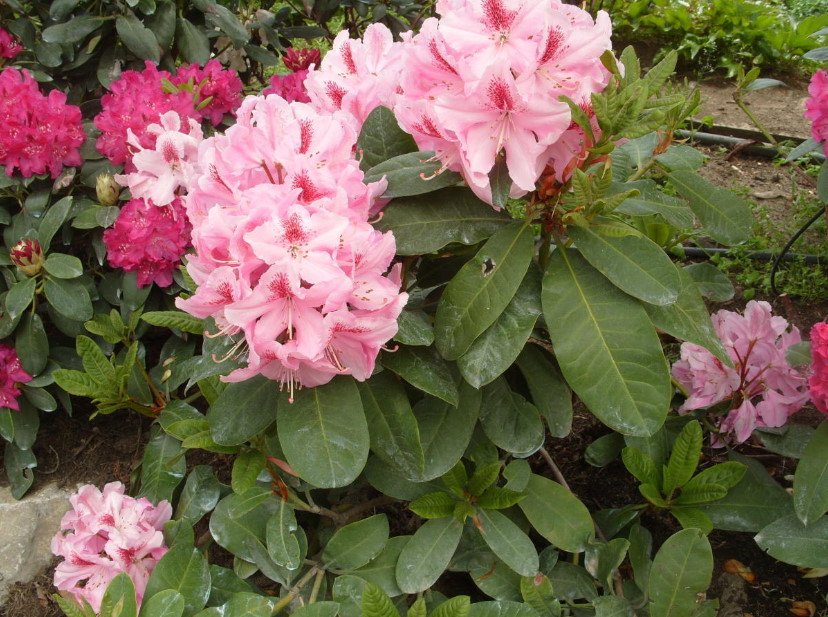
Rhododendron borders are real in terms of filling the seats of the soil substrate with an acidity of 4.5-5 regular watering acidified water.
They are used sanitary pruning (as the detection of dry and broken branches) and shortening of vigorous shoots, outstanding beyond the crown (in August).
The nuances of the borders of Berberis
To create evergreen lines of gold-colored small flowers collected in a graceful brush, suitable:
- Berberis verruculosa;
- Darwin.;
- B. buxifolia.
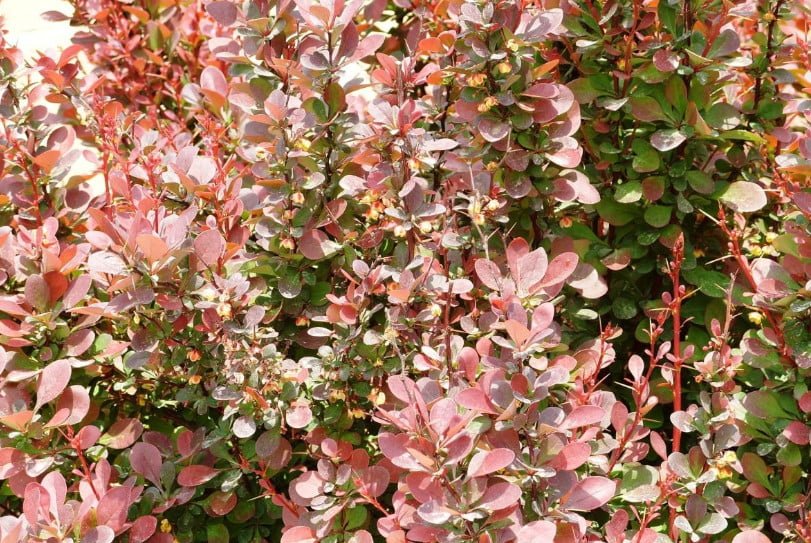
Such curbs, both free-growing and molded, with a decorative and protective value combine utilitarian: honey and food use.
The nuances of the borders of Lavandula
Lovers Lavandula angustifolia may well arrange at his dacha live borders of this Mediterranean beauty.
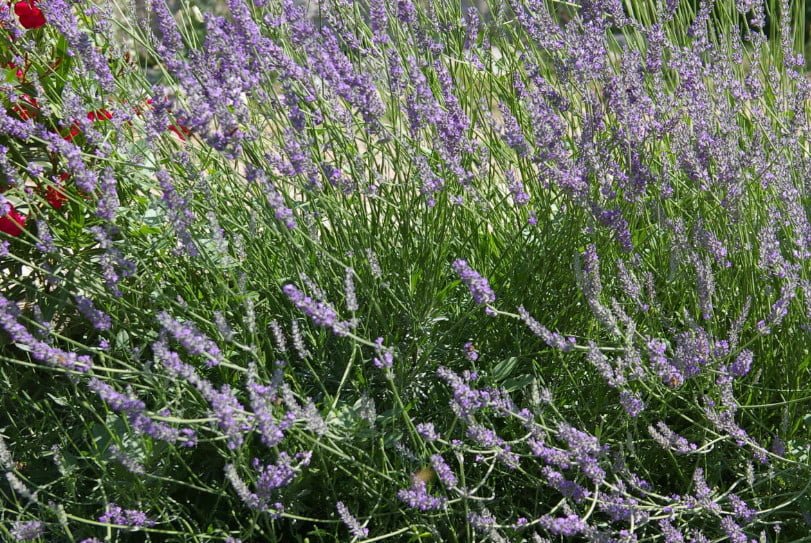
The period of its flowering is like a beautiful fairy tale, embodied in reality. Optimal placement of plants in a row of 20-30 cm (depending on the size of the forms); possible double-row planting with the distance between rows of 40 cm Pruning Lavandula border is carried out after flowering or in early-mid spring: remove the withered shoots, capturing 2.5 cm of last year’s growth.
The nuances of the borders of Viburnum tinus
Spectacular free-growing borders, suddenly blooming in winter can be created from Viburnum tinus.
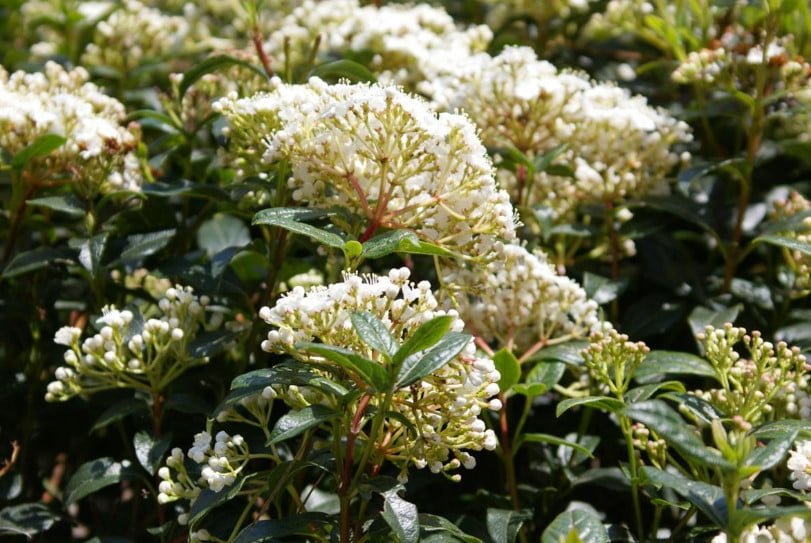
After flowering (in may) spend forming pruning, and before — in March, if the border is old, then rejuvenate it by strong pruning on the stump.
These beautiful borders can be created from Chaenomeles.
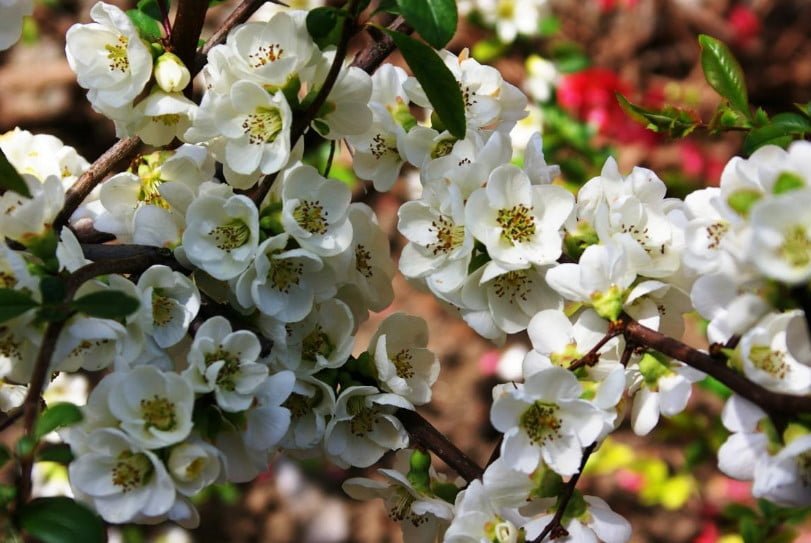
Tell me, isn’t the border of Rosmarinus officinalis beautiful in bloom?
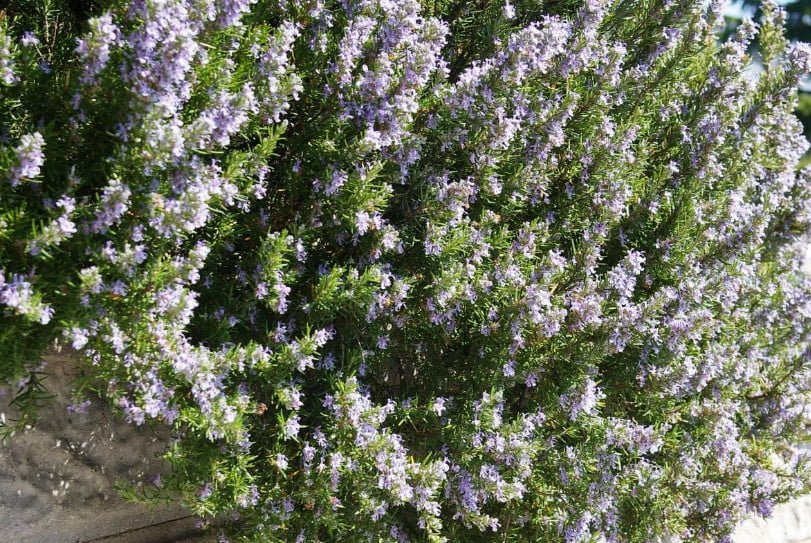
Luxurious free-growing border can be arranged from Pieris japonica, blooming in April.

However, even with a specially prepared landing site with an acidic substrate and watering with acidified water, it will suffer over time.
On this my story about the beautiful hedges is not over: soon followed by a continuation of the species and varieties to create a medium and high framing cottages.
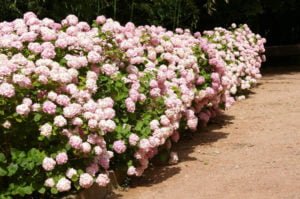
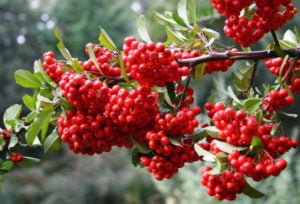
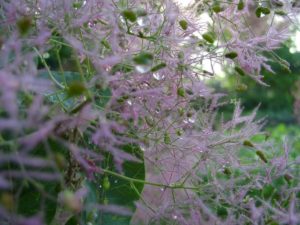

Leave a Reply